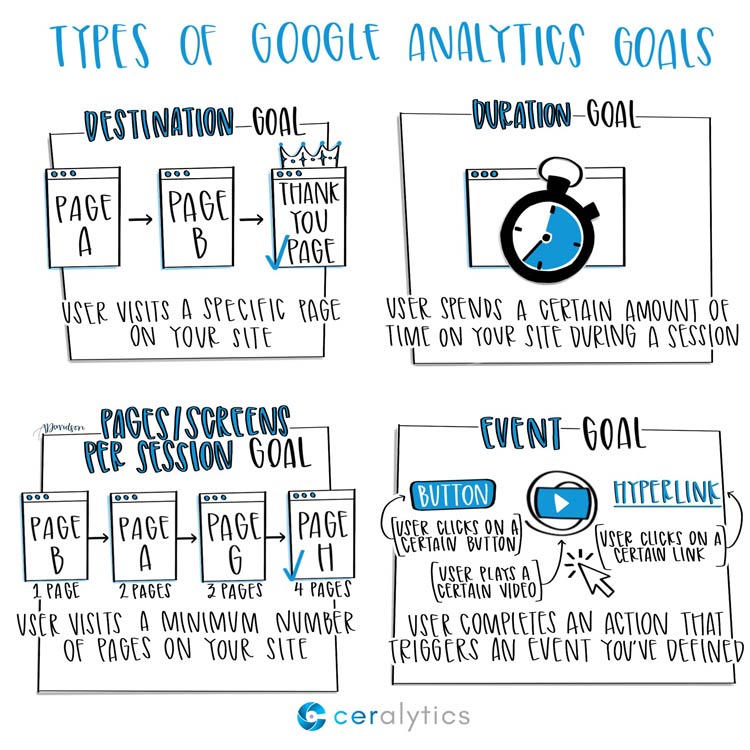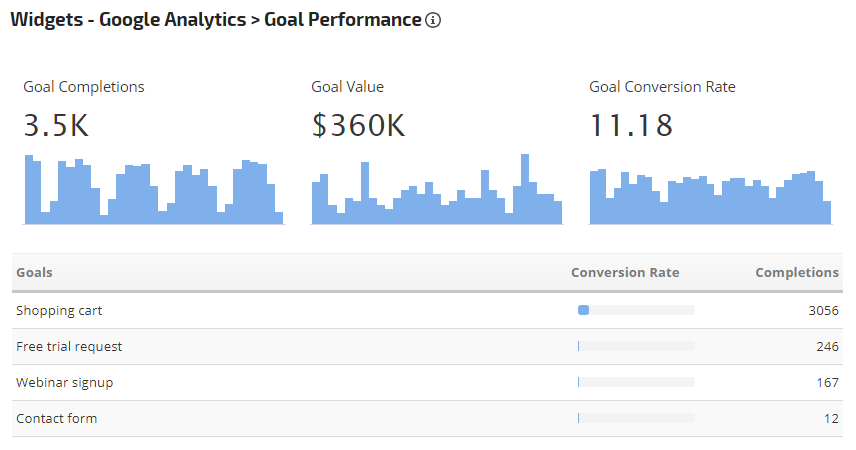Discover What Data Is Google Analytics Goals Unable to Track
Wiki Article
Discover the Limitations of Google Analytics Goals: Revealing the Information Types That Remain Untrackable
As businesses significantly count on data-driven decision-making, understanding the constraints of tools like Google Analytics comes to be extremely important. While Google Analytics Goals offer beneficial insights into customer interactions, there exist information types that elude monitoring, presenting challenges to a thorough understanding of user actions.Incomplete Individual Trip Tracking
Incomplete customer trip monitoring within Google Analytics can hinder the ability to accurately analyze user actions. When the customer trip is not totally tracked, there are spaces in the data that stop a detailed understanding of how customers engage with a web site. This lack of understanding can lead to missed possibilities for optimization and improvements to the user experience.One typical issue with incomplete individual journey monitoring is the inability to see the full path that users take previously finishing an objective or leaving the website. Without this details, it is challenging to determine where customers might be encountering challenges or rubbing factors that stop them from converting. In addition, insufficient tracking can obscure the influence of specific advertising and marketing efforts or web site changes on individual behavior.
To resolve this limitation, it is critical to establish correct tracking devices within Google Analytics to capture the whole individual trip. This may entail establishing event tracking, objective funnels, or using tools like Google Tag Manager to make certain that no important interactions go unrecorded. By getting a comprehensive sight of the customer journey, website proprietors can make even more informed decisions to enhance customer interaction and drive conversions.
Attribution Obstacles
Browsing via acknowledgment challenges in Google Analytics calls for a complete understanding of how different touchpoints contribute to the general conversion procedure. Attribution challenges arise from the complexity of modern-day client journeys, where customers connect with numerous channels prior to transforming.One common acknowledgment obstacle is the trouble in connecting conversions to the appropriate source, specifically in situations where users engage with numerous channels prior to transforming. In addition, cross-device tracking postures another attribution difficulty, as users frequently switch between gadgets during their journey, making it challenging to track their communications flawlessly.
Offline Conversions
Provided the obstacles related to associating conversions precisely in online networks, the measurement of offline conversions presents a significant possibility for marketing professionals seeking an extra detailed understanding of their consumers' trip. Offline conversions refer to activities that clients take in the real world, such as making purchases in brick-and-mortar shops or over the phone, going to occasions, or involving with published products - what data is google analytics goals unable to track. These conversions are critical for organizations that run both online and offline, as they supply beneficial understandings into the efficiency of advertising and marketing projects across various touchpointsTracking offline conversions generally positioned a considerable obstacle for marketing experts, as it was testing to link these actions back to particular on the internet communications accurately. With innovations in innovation, such as the integration of CRM systems, distinct identifiers, and coupon codes, companies can now bridge the void in between online and offline information to gain an extra all natural sight of client actions. By efficiently measuring offline conversions, marketing professionals can maximize their techniques, assign resources extra successfully, and inevitably boost the general client experience.
Cross-Device Monitoring
Cross-device monitoring plays an important function in understanding the interconnected nature of consumers' digital interactions across numerous tools. In today's omnichannel globe, where users flawlessly switch over in between desktop computers, tablets, and smartphones, tracking their behavior throughout these gadgets is necessary for marketers to acquire a comprehensive view of their client trip.
Additionally, privacy worries and policies such as GDPR and CCPA have further difficult cross-device monitoring. With users requiring even go to this site more control over their information and increased restrictions on tracking modern technologies, online marketers have to find cutting-edge and privacy-compliant means to attach customer interactions throughout devices.
Dynamic Material Involvement
Comprehending user involvement with dynamic content is critical in maximizing digital advertising and marketing methods for improved target market communication. Dynamic content refers to site components that alter based upon user actions, preferences, or various other variables, using a tailored experience. Nonetheless, tracking individual communications with vibrant material poses obstacles for traditional analytics tools like Google Analytics.While Google Analytics can track basic communications like clicks and web page sights, it might have a hard time to catch more nuanced engagements within vibrant web content. what data is google analytics goals unable to track. Metrics such as time invested in specific vibrant components, hover actions, or communications within pop-ups are typically not easily quantifiable using conventional tracking approaches. This restriction hinders online marketers' ability to fully realize how customers are involving with dynamic material and customize their methods accordingly

Conclusion
In conclusion, Google Analytics objectives have restrictions in tracking insufficient individual journeys, attributing conversions properly, recording offline conversions, tracking cross-device interactions, and measuring dynamic material interaction. These restrictions highlight the value of exploring extra tracking techniques and additional reading devices to obtain a more thorough understanding of customer actions and conversions beyond what Google Analytics can give.While Google Analytics Goals deal beneficial understandings into individual communications, there exist data kinds that thwart tracking, positioning obstacles to a comprehensive understanding of individual habits.Insufficient individual trip tracking within Google Analytics can impede the capability to properly analyze customer behavior. When the individual trip is not fully tracked, there are gaps in the data that avoid an extensive understanding of how users communicate with a web site.One common concern with incomplete individual journey tracking is the inability to see the complete path that individuals take in the past finishing a goal or leaving the website. By gaining a comprehensive sight of the individual journey, internet site owners can make even more educated decisions to boost individual engagement and drive conversions.
Report this wiki page